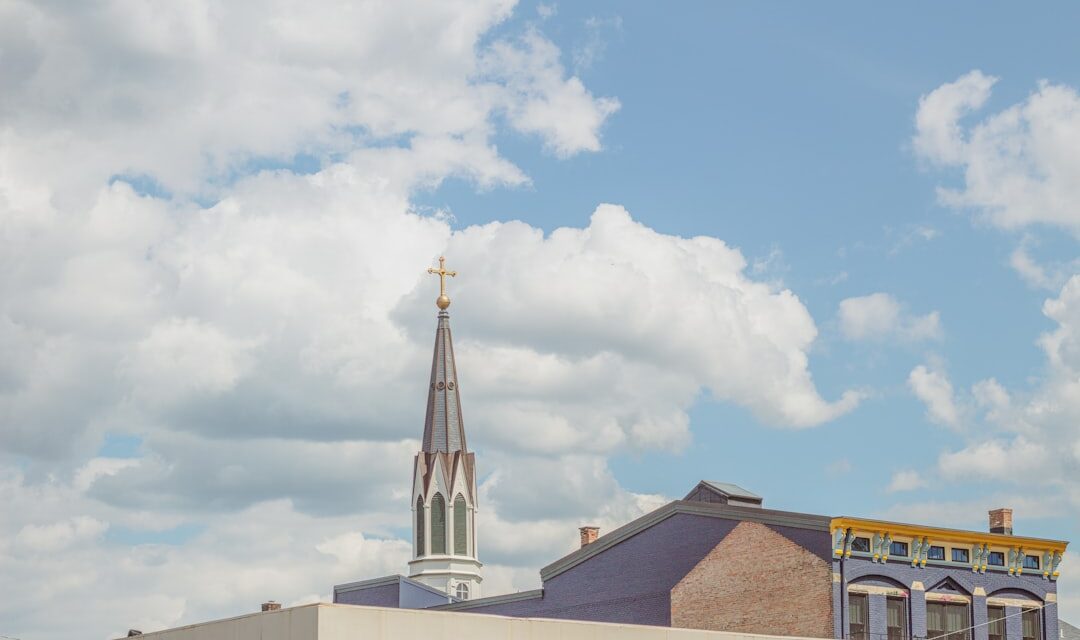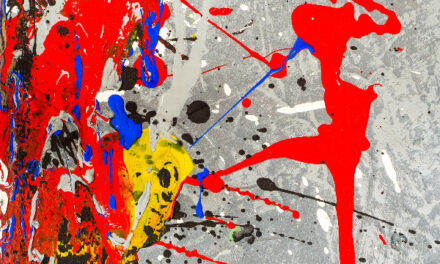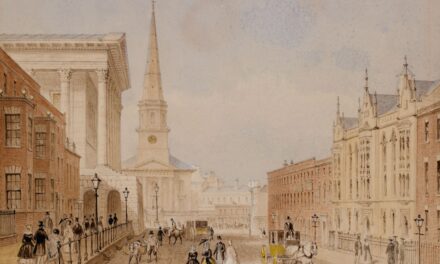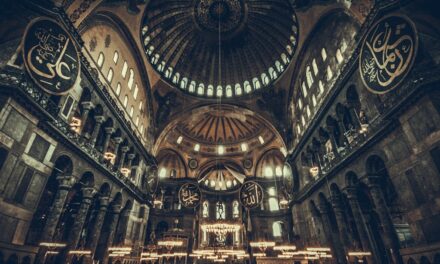Romanesque art emerged in the late 10th century and flourished until the 12th century in Europe. It developed during the period following the fall of the Roman Empire, amidst the subsequent instability. The term ‘Romanesque’ is derived from the Latin word ‘Romanus’, meaning ‘in the Roman manner’, and was first employed in the 19th century to describe the art and architecture of this era.
The origins of Romanesque art can be traced to the Carolingian Renaissance, a period of renewed interest in classical art and culture under Charlemagne’s rule in the 8th and 9th centuries. This revival of classical influences established the foundation for Romanesque art, which combined elements of Roman, Byzantine, and Germanic art. The rise of monasticism significantly influenced the development of Romanesque art, as monasteries became centres of learning, culture, and artistic production.
The need for larger churches to accommodate increasing numbers of pilgrims led to the development of new architectural styles, which in turn influenced the art of the period. The emergence of Romanesque art was closely tied to the rise of feudalism and the power of the Church in medieval Europe. The Church played a central role in commissioning and patronising art and architecture, and Romanesque art often served as a means of conveying religious messages and promoting Christian doctrine.
The combination of these various influences resulted in a distinctive artistic style characterised by monumental architecture, elaborate sculpture, and vibrant frescoes.
Summary
- Romanesque art originated in the 11th century in Western Europe, drawing inspiration from Roman and Byzantine art.
- Characteristics of Romanesque art include thick walls, rounded arches, and decorative elements such as sculptures and paintings.
- Romanesque art had a significant influence on architecture, leading to the development of iconic structures such as cathedrals and castles.
- Religion played a central role in Romanesque art, with many artworks depicting biblical scenes and religious figures.
- Notable examples of Romanesque art include the Bayeux Tapestry, the Abbey Church of Saint-Savin-sur-Gartempe, and the Cathedral of Santiago de Compostela.
Characteristics of Romanesque Art
Architectural Features
These architectural features were designed to create large, imposing spaces that could accommodate the growing number of pilgrims who were travelling to religious sites during this period. The use of rounded arches and barrel vaults allowed for greater height and stability in church buildings, while the thick walls provided support for the heavy stone roofs.
Elaborate Sculpture and Decorative Elements
In addition to its architectural features, Romanesque art is also known for its elaborate sculpture and decorative elements. Churches and cathedrals were adorned with intricate carvings, often depicting biblical scenes, saints, and other religious figures. These sculptures were intended to convey moral and religious messages to the illiterate masses, and they played a central role in the visual storytelling of the time.
Vibrant Frescoes, Murals, and Symbolism
The use of vibrant frescoes and murals was also common in Romanesque art, with many churches featuring colourful paintings that depicted scenes from the Bible and the lives of saints. Another characteristic of Romanesque art is its use of symbolism and allegory. Many of the decorative elements found in Romanesque churches were imbued with symbolic meaning, with each element serving as a visual representation of a religious or moral concept. For example, the use of animal motifs such as lions, eagles, and griffins was often used to symbolise virtues such as strength, courage, and wisdom. This use of symbolism added an additional layer of meaning to Romanesque art, making it a rich and complex visual language that was accessible to both the educated elite and the common people.
The Influence of Romanesque Art on Architecture

The influence of Romanesque art on architecture was profound and far-reaching, shaping the development of church buildings and other structures throughout medieval Europe. The use of rounded arches, barrel vaults, and thick walls in Romanesque architecture set the stage for the later development of Gothic architecture, which built upon these innovations to create even more grand and elaborate structures. One of the most significant contributions of Romanesque architecture was its emphasis on creating large, open interior spaces that could accommodate large congregations of worshippers.
This focus on creating monumental spaces had a lasting impact on the design of churches and cathedrals, influencing architects for centuries to come. The use of decorative elements such as sculpture, frescoes, and stained glass windows also became a defining feature of medieval architecture, with many later buildings incorporating these elements into their design. The influence of Romanesque architecture extended beyond religious buildings to influence secular structures as well.
The use of rounded arches and vaulted ceilings became common in castles, palaces, and other important buildings, shaping the architectural landscape of medieval Europe. The legacy of Romanesque architecture can still be seen today in many historic buildings throughout Europe, serving as a testament to the enduring impact of this artistic style.
The Role of Religion in Romanesque Art
Religion played a central role in the development of Romanesque art, shaping both its subject matter and its function within society. The Church was a powerful patron of the arts during this period, commissioning many of the great works of Romanesque art that still survive today. Religious themes dominated much of Romanesque art, with churches and cathedrals serving as important sites for the display of religious imagery.
The function of Romanesque art within a religious context was multifaceted. On one hand, it served as a means of conveying religious messages and promoting Christian doctrine to a largely illiterate population. The elaborate sculptures, frescoes, and decorative elements found in churches were intended to educate and inspire worshippers, providing them with visual representations of biblical stories and religious teachings.
In this way, Romanesque art played a crucial role in the dissemination of religious knowledge and morality during a time when few people could read or write. On the other hand, Romanesque art also served as a means of glorifying God and expressing devotion to the Christian faith. The grandeur and beauty of Romanesque churches and their decorative elements were intended to inspire awe and reverence in worshippers, creating a sense of sacred space that was conducive to prayer and contemplation.
The use of symbolism and allegory in Romanesque art further reinforced its religious significance, with each element serving as a visual representation of spiritual truths.
Notable Examples of Romanesque Art
There are many notable examples of Romanesque art that still survive today, providing valuable insights into the artistic achievements of this period. One such example is the Abbey Church of Saint-Savin-sur-Gartempe in France, which is renowned for its well-preserved frescoes that date back to the 11th century. These vibrant paintings depict scenes from the Bible and the lives of saints, showcasing the rich visual storytelling that was characteristic of Romanesque art.
Another important example of Romanesque art is the Cathedral of St. James in Santiago de Compostela, Spain. This pilgrimage church is famous for its elaborate sculptural decoration, including intricately carved doorways and columns that are adorned with biblical scenes and symbolic motifs.
The cathedral’s imposing architecture and decorative elements make it a prime example of Romanesque art’s emphasis on creating monumental spaces that inspire awe and reverence. The Church of St. Foy in Conques, France is another notable example of Romanesque art, known for its impressive collection of sculptures that adorn its façade and interior.
These sculptures depict a wide range of subjects, including biblical scenes, saints, and mythical creatures, showcasing the diverse range of imagery that was characteristic of Romanesque art. The church’s rich decorative elements make it a prime example of how Romanesque art was used to convey religious messages and promote Christian doctrine.
The Legacy of Romanesque Art

The Foundations of Gothic Architecture
The innovations in architectural design pioneered during the Romanesque period laid the groundwork for the later development of Gothic architecture, which built upon these innovations to create even more grand and elaborate structures. The emphasis on creating large, open interior spaces that could accommodate large congregations of worshippers became a defining feature of medieval architecture, shaping the design of churches and cathedrals for centuries to come.
A Lasting Visual Legacy
The use of decorative elements such as sculpture, frescoes, and stained glass windows also became a lasting legacy of Romanesque art, influencing the visual language of medieval architecture. The legacy of Romanesque art also extends beyond its architectural innovations to encompass its rich visual storytelling and symbolic language.
Enduring Influence on Artistic Expression
The use of sculpture, frescoes, and decorative elements to convey religious messages and promote Christian doctrine had a lasting impact on artistic production throughout medieval Europe. The legacy of Romanesque art can still be seen today in many historic churches and cathedrals throughout Europe, serving as a testament to its enduring influence on artistic expression.
The Revival of Romanesque Art
In recent years, there has been a renewed interest in Romanesque art, with scholars and artists alike seeking to explore its rich visual language and architectural innovations. This revival has led to a greater appreciation for the artistic achievements of the Romanesque period, as well as a deeper understanding of its enduring impact on artistic expression. One notable example of this revival is the restoration efforts that have been undertaken to preserve and protect many important examples of Romanesque art.
These efforts have helped to ensure that these valuable works continue to be appreciated by future generations, while also shedding new light on their historical significance. In addition to restoration efforts, there has also been a growing interest in creating new works inspired by the visual language and architectural innovations of Romanesque art. Many contemporary artists have drawn inspiration from the rich symbolism and allegory found in Romanesque sculpture and frescoes, incorporating these elements into their own artistic practice.
The revival of interest in Romanesque art has also led to new scholarly research that seeks to deepen our understanding of this important period in artistic history. By uncovering new insights into the cultural and historical context in which Romanesque art emerged, scholars are shedding new light on its enduring significance and influence. In conclusion, Romanesque art emerged in response to the chaos and instability that followed the fall of the Roman Empire, drawing upon classical influences as well as developments in monasticism and feudalism.
Its distinctive architectural style, elaborate sculpture, vibrant frescoes, symbolism, allegory all contributed to its unique visual language. Its influence on architecture was profound; shaping church buildings as well as secular structures throughout medieval Europe. Religion played a central role in its development; serving as both subject matter as well as function within society.
Notable examples such as Abbey Church Saint-Savin-sur-Gartempe in France or Cathedral St James Santiago de Compostela Spain showcase its rich visual storytelling while its legacy can still be seen today throughout Europe. Its revival has led to restoration efforts as well as new works inspired by its visual language while new scholarly research seeks to deepen our understanding further into this important period in artistic history.
If you are interested in learning more about the evolution of art through different historical periods, you may also enjoy reading about Prehistoric Art. This article provides an introduction to the art created by early humans, exploring the cave paintings and sculptures that date back thousands of years. You can find more information about Prehistoric Art here.
FAQs
What is Romanesque art?
Romanesque art refers to the artistic style that was prevalent in Europe from the 10th to the 12th century. It is characterized by its use of rounded arches, thick walls, and decorative elements such as sculptures and intricate carvings.
What are the key features of Romanesque art?
Key features of Romanesque art include the use of rounded arches, thick walls, barrel vaults, and decorative elements such as sculptures, frescoes, and intricate carvings. It also often features religious themes and motifs.
Where can Romanesque art be found?
Romanesque art can be found in various churches, cathedrals, and monasteries across Europe. Some notable examples of Romanesque art can be found in places such as the Abbey Church of Saint-Savin-sur-Gartempe in France, the Cathedral of Santiago de Compostela in Spain, and the Durham Cathedral in England.
What is the significance of Romanesque art?
Romanesque art played a significant role in the development of European art and architecture. It marked a shift from the earlier Byzantine and Carolingian styles and laid the foundation for the later Gothic art and architecture. It also served as a means of expressing religious devotion and conveying biblical stories to the largely illiterate population of the time.




